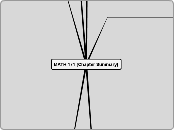jonka Hannah Thompson 3 vuotta sitten
230
Generative Topic: Order
Understanding the order of operations is crucial for solving algebraic equations correctly. This principle is encapsulated in the acronym PEMDAS, which stands for Parentheses, Exponents, Multiplication, Division, Addition, and Subtraction.









